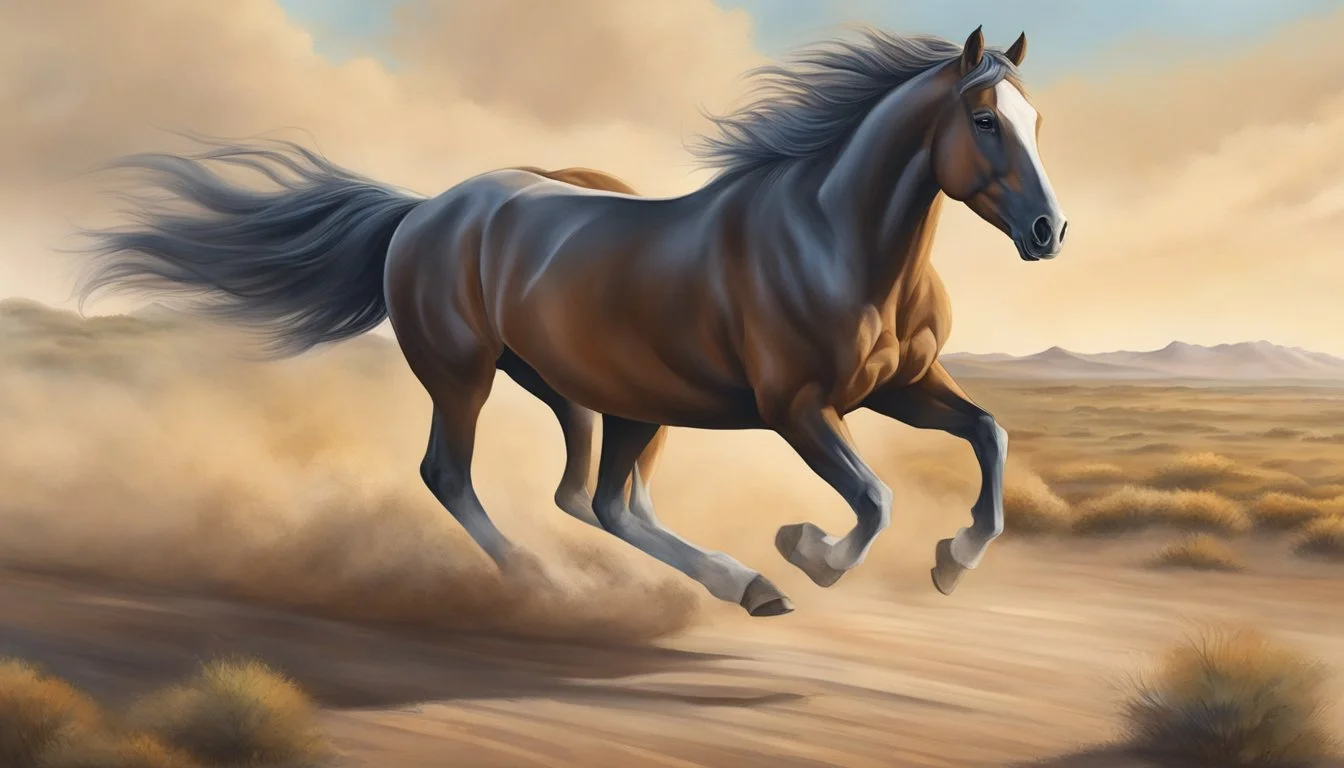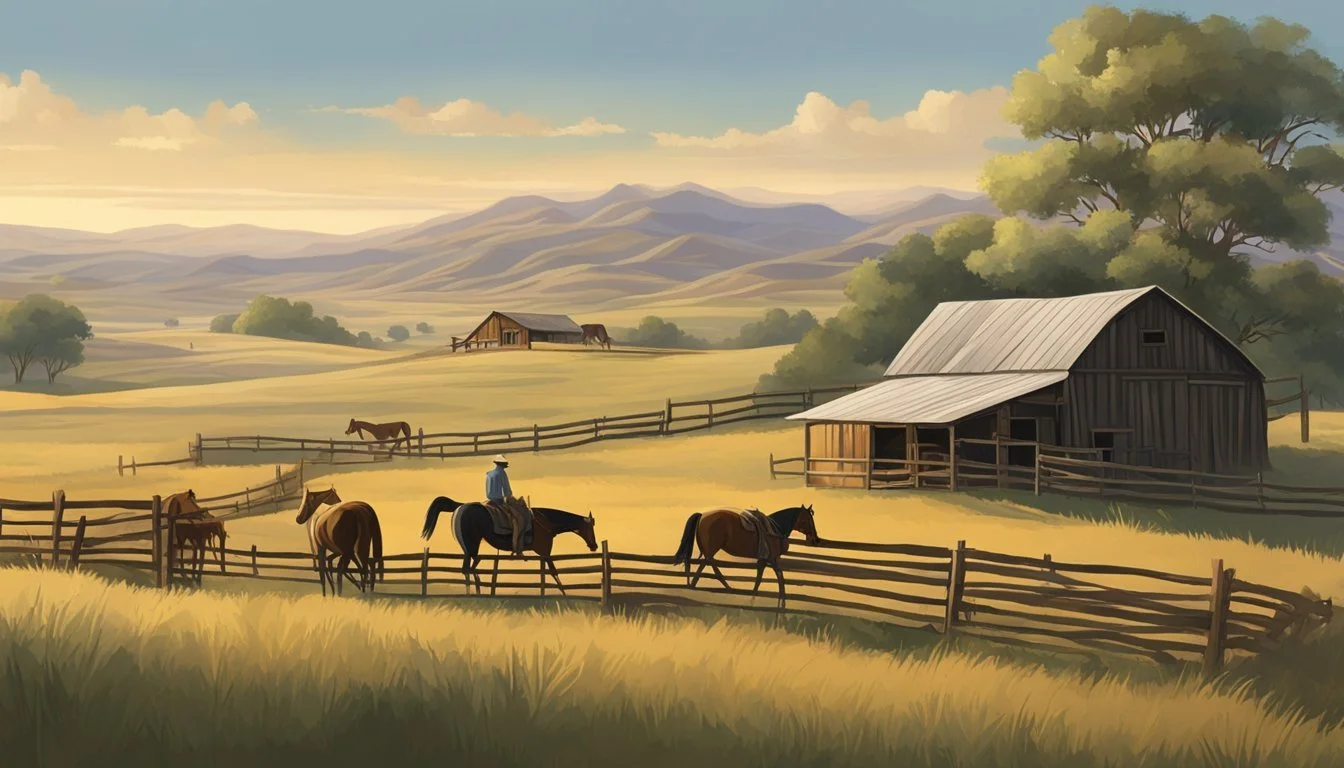The Texas Horseman
Exploring Unique Breeds and Training Methods of the Lone Star State
Texas boasts a rich equestrian culture that is as diverse and expansive as the state itself. Known for its deep connection to horsemanship, Texas is home to a variety of horse breeds, each suited to the vast landscapes and the demands of work and sport that define the region. The American Quarter Horse, notable for its speed in short-distance sprinting, is a prominent breed in Texas, reflecting the state's storied history with rodeos and cattle ranching.
Training techniques for these horses are tailored to their unique strengths and the tasks they are bred for. Texas horsemen prioritize safety, functionality, and the horse's well-being when developing training methods. This approach ensures that the horse performs at its best while maintaining a harmonious relationship between the animal and its handler. Core principles of training, deeply respected by the Texans, establish a foundation for consistent and effective teaching and handling of these horses.
Emphasizing the importance of proper breeding and horse care, Texans place high value on evaluating equine health, including semen quality for breeding programs. This meticulous attention to detail is vital for the continuation of strong bloodlines and the production of high-caliber horses that the state is known for. Whether it's for competition, work, or pleasure, horsemanship in Texas is a testament to the state's commitment to preserving and enhancing the equine industry.
History of Texan Horsemanship
Texas has a storied history with horse breeding and equestrianism, with evolution in horse breeds and the Fort Worth area playing significant roles. Throughout the state, horse shows and derbies have become iconic events showcasing Texan horsemanship.
Evolution of Horse Breeds in Texas
The beginnings of the Texas horsemanship saga can be traced back to the colonial era with the inception of the American Quarter Horse, known for its sprinting prowess over short distances. It transitioned from a quarter-mile racer to one of the most diversified horse breeds. Specialists in Texas have contributed to the industry by breeding thoroughbreds as well. The Texas Thoroughbred Breeders' Association, established by Dallas businessmen in 1955, boasts a substantial membership, reflecting the breed's popularity.
Horse Breeds Originating in Texas:
American Quarter Horse: Known for versatility and speed in quarter-mile racing.
Thoroughbreds: Bred for racing and performance, with a prominent breeding association.
Fort Worth and North Texas Equestrian Influence
Fort Worth has emerged as a pivotal area in North Texas, nurturing a vibrant equestrian culture. With a legacy dating back to the cattle drive era, the region has become synonymous with equine training and breeding excellence. Equestrian facilities dotting the landscape of North Texas bear testament to the region's commitment to superior horse care and training methodologies.
North Texas Equestrian Contribution:
Training Facilities: Numerous breeding, boarding, and training farms.
Horse Care: Emphasis on high-quality equine management and training.
Iconic Texas Horse Shows and Derbies
Texas boasts an array of esteemed horse shows and derbies, celebrated for their competitive spirit and the display of top-tier horsemanship. These events serve as a culmination of the state's rich equestrian history, demonstrating the flourishing horse culture and breeding expertise that define Texas as a hub for equestrian activities.
Notable Texas Equestrian Events:
Texas Derby: Showcases the finest in horse racing and breeding.
Horse Shows: Events across the state highlighting skill and training excellence.
Breeding Techniques in Texas
In Texas, breeding techniques are honed to ensure the propagation of equine excellence. Breeding managers and owners emphasize strategic selection, genetic diversity, and semen quality to maintain the state's reputable horse lineage.
Selection Criteria for Broodmares and Stallions
Breeding programs in Texas place considerable emphasis on selecting broodmares and stallions based on a robust set of criteria. This typically includes performance history, pedigree analysis, and physical conformation. For stallions, criteria such as competitive achievements and temperament are also highly valued, as these traits are inheritable and contribute to the overall quality of the offspring.
Genetic Diversity and Preservation of Bloodlines
Texas breeders recognize the importance of genetic diversity in maintaining healthy equine populations. They are committed to preserving distinguished bloodlines while preventing inbreeding. This delicate balance is achieved through thorough pedigree analysis and informed selection, ensuring a diverse gene pool for future generations of Texas horses.
Role of Semen in Selective Breeding
The quality of semen is paramount in Texas' selective breeding practices. Breeders utilize comprehensive semen evaluations to assess motility, morphology, and viability of the sperm. This data ensures that only the most viable semen is used for artificial insemination, a common technique employed in equine breeding to optimize genetic quality and breeding success.
Major Horse Breeds and Their Characteristics
In Texas, the equestrian landscape is colored by several major horse breeds, each with unique characteristics that have been refined to excel in various forms of work and sport.
American Quarter Horse and its Dominance
The American Quarter Horse is the backbone of the Texan equine population. Known for their short bursts of speed, stocky build, and calm disposition, these horses dominate in activities requiring agility and quick manoeuvres. They often have a broad chest and muscular hindquarters, which are essential in cattle herding and rodeo events.
Thoroughbreds and Racing Lineages
Thoroughbreds in Texas have a storied presence in racing lineages, celebrated for their speed and spirit. They are typically tall, slim, and athletic, with a reputation for excellence on the racetrack. Their lineage is meticulously maintained to preserve and enhance their racing capabilities, which often makes them a breed of choice for competitive racing and high-intensity sports.
Appaloosas and Paint Horses: Patterns and Performances
Appaloosas are distinguished by their spotted coat patterns and versatile skill set. They are bred not just for the visual appeal of their coats but also for their intelligence and endurance. Paint Horses also display unique coat patterns, with two-toned coloration and distinctive facial markings. Both breeds are versatile, excelling in Western disciplines such as trail riding, and are equally known for their hardiness and even temperaments.
Training Techniques for Texas Horsemen
Texas Horsemen have developed refined techniques tailored to their horse’s capabilities, focusing on precision, control, and agility in events like reining, cutting, roping, and barrel racing.
Reining: Gaining Precision and Control
Using a combination of cues, trainers teach horses to perform a series of maneuvers with high precision, including spins, rollbacks, and sliding stops. Reining demands that trainers have a harmonious relationship with their horses, carefully balancing cues and ensuring the horse is responsive yet relaxed.
Spin: Horse pivots on hind legs in place.
Rollback: Horse turns 180 degrees after stopping.
Sliding Stop: Horse drops hindquarters and slides on hind feet.
Cutting: Training for Ranch Work
Cutting requires horses to isolate and manage cattle, reflecting their foundational role in Texas ranch work. Trainers spend considerable time honing their horse's natural instinct to anticipate and mirror a cow's movements, which is essential for effective livestock management.
Cow Sense: Natural instinct to track and anticipate cow movement.
Mirror Movements: Training the horse to follow the cow's movement.
Roping: Time-Honored Texas Tradition
Roping, a skill derived from the practical needs of cattle ranching, is where trainers prepare horses to work calmly and efficiently in partnership with the rider. Horses are trained to maintain a steady pace and follow the cow closely—not too tight, not too loose—to optimize the chance for a successful rope.
Steady Pace: Keeping consistent speed during the chase.
Close Follow: Horse learns to match the cow's path and speed without crowding.
Barrel Racing: Agility and Speed
Barrel racing is a test of agility and speed, where trainers focus on teaching horses to execute tight turns around barrels at high speed without knocking them over. Key training aspects include building the horse's ability to accelerate and decelerate quickly while maintaining balance and coordination.
Accelerate/Decelerate: Quick speed changes to navigate barrels.
Balance/Coordination: Ability to perform tight turns with agility.
The Economics of Horse Ranching
The horse ranching industry in Texas is a significant contributor to the state's economy, with deep roots in agriculture and ranching traditions. It involves various financial components like agriculture, transportation, labor, and broader economic impacts.
Agriculture and Ranching
Texas horse ranching intertwines closely with the state's agricultural framework. Horses are valued at $4.2 billion, illustrating their importance in the state's agriculture sector. Horse ranching is not only about raising and selling horses but also encompasses the cultivation of forage and grain to sustain these animals. This creates a substantial market for feed production, directly impacting agricultural revenues.
Annual cash receipts from the purchase and sale of horses are significantly high, showcasing the lucrative nature of the industry.
Employment in agriculture and ranching is bolstered through direct and indirect jobs associated with horse ranching, including breeders, trainers, and farm labor.
Equine Transportation and Labor
Transportation of horses is a vital aspect of the equine industry, considering the size of Texas and the frequent movement of horses for shows, races, and sales.
Labor income generated from the Texas horse industry is estimated at $2.1 billion.
Equine transportation creates jobs in logistics, requiring specialized vehicles and handling to ensure horse safety and well-being during transit.
Employment in the equine industry also extends to those involved in the care and maintenance of horses during transportation.
Financial Impacts and Considerations
The financial implications of horse ranching are extensive and multifaceted.
The equine industry contributes $3.3 billion to the Texas GDP.
Statewide economic output is quantified at $5.9 billion, indicating the far-reaching influence of horse ranching on the regional economy.
Texas horse ranching also faces several financial challenges and considerations, such as:
Investment in infrastructure to ensure safe and functional facilities for horses.
Legal and insurance costs related to horse safety and liability issues.
Operational costs, including but not limited to, veterinary care, training, and facility maintenance.
Each of these economic aspects demonstrates the substantial role that horse ranching plays within the broader Texas economy, ensuring the sector's sustainability and growth.





